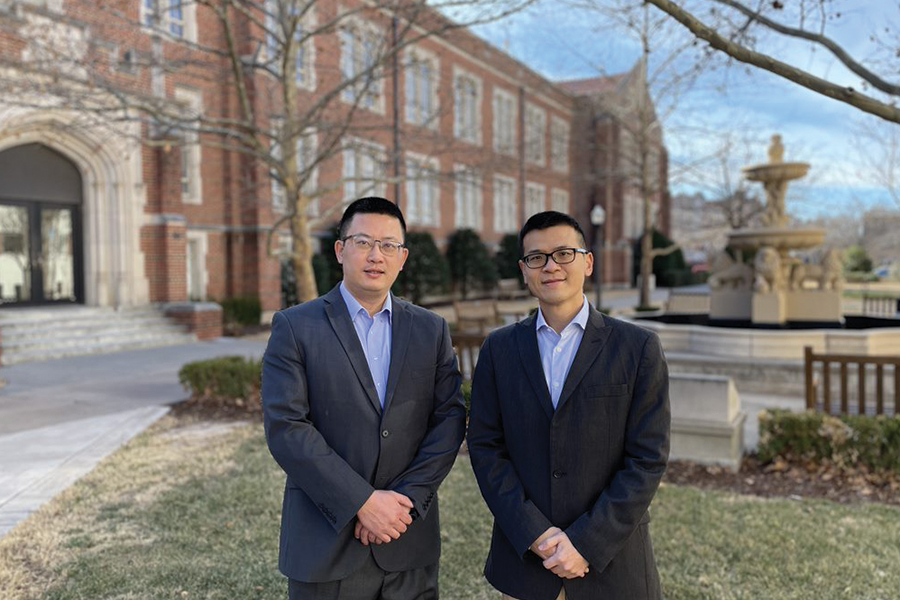
Under the direction of University of Oklahoma engineer Chung-Hao Lee, Ph.D., a five-year research project will lead to designing a device that can be customized to better treat unique aneurysms, the irregular bulge in blood vessels that can be deadly.
Lee, an associate professor in the School of Aerospace and Mechanical Engineering at the Gallogly College of Engineering, specifically targets subarachnoid hemorrhages or bleeding in the space between the brain and the surrounding membrane. This kind of bleeding usually happens when an aneurysm bursts in the brain.
The current methods for treating intracranial or brain aneurysms are surgical clip ligation which requires a high-risk open-skull surgery, or the current “gold standard” called endovascular coil embolization, a minimally invasive surgery that uses a catheter to deliver soft coils to prevent the flow of blood into the affected blood vessel.
“The driving problem is even with this technique, due to the complexity of the shape, size or the geometry of the aneurysm, is that there is a heightened risk of recurrence,” Lee said. "It's possible that five or six years after initial embolization, 20-25% of the patients will develop the same issue again. So, it’s increasing the corresponding health care burden and may also lead to poor prognosis and even the mortality for the patient.”
Lee is working with Yingtao Liu, Ph.D., William H. Barkow Presidential Professor and associate professor in the School of Aerospace and Mechanical Engineering at Gallogly College of Engineering; Bradley N. Bohnstedt, M.D., a neurosurgeon at Indiana University School of Medicine; and Hyowon Lee, Ph.D., a biomedical engineer at Purdue University. Funded by a $3.25 million grant from the National Institutes of Health for the five-year project, the researchers will use advanced biomedical 3-D printing to design and create unique, customized devices that can be tailored to the specific geometrical shape, size and location of an aneurysm.
“The overall clinical and translational benefits of our project will be to prevent aneurysm rupture and its induced strokes, which accounts for roughly 15% of the new strokes every year, and to decrease the 20% rate of failed cases from the current gold standard. This is an extremely promising area to drive the clinical field forward,” Lee said.
The project, “Improving outcomes in endovascular treatment of intracranial aneurysms: Combining additive manufacturing, in-silico modeling, and shape memory polymers,” is funded by the National Heart, Lung and Blood Institute of the National Institutes of Health, award no. R01HL159475. The project uses data from a previous study funded by the Oklahoma Center for the Advancement of Science and Technology and Oklahoma Shared Clinical and Translational Resources and the Interdisciplinary Research SEED funding from the Gallogly College of Engineering.
By Chelsea Julian, Office of the Vice President for Research and Partnerships